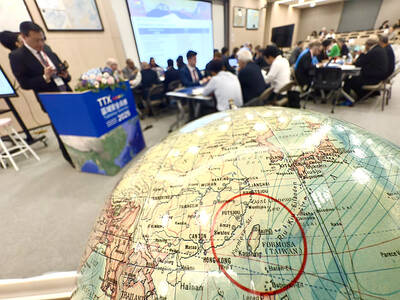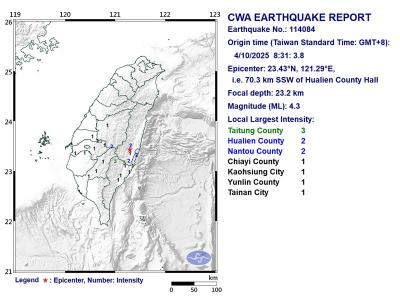Armed conflict between the US and China during the next 20 years is improbable, provided Washington retains the capacity to deter behavior that would lead to such a clash, a US think tank says in a new report.
In an occasional paper titled Conflict with China: Prospects, Consequences and Strategies for Deterrence prepared by RAND Corp for the US Army, the authors say China’s security interests and military capabilities for the next two decades are expected to remain focused on its immediate periphery, with conflict likeliest to occur over Taiwan, the Korean Peninsula, one or more countries in Southeast Asia or India.
“China is seeking neither territorial aggrandizement nor ideological sway over its neighbors,” the report says. “It shows no interest in matching US military expenditures, achieving a comparable global reach or assuming defense commitments beyond its immediate periphery.”
While such intentions could change, the US would probably receive considerable warning of such a shift, given the lead time needed to develop the capabilities needed for a new strategy that would seek to alter China’s current emphasis on regional contingencies.
“While China’s overall military capabilities will not equal those of the United States anytime soon, it will more quickly achieve local superiority in its immediate neighborhood, first in and around Taiwan and then at somewhat greater distances,” the paper says. “In consequence, the direct defense of contested assets in that region will become progressively more difficult, eventually approaching impossible.”
Given this, the US will become increasingly dependent on “escalatory options for defense and retaliatory capabilities for deterrence,” it says.
“Conventional strikes on mainland Chinese military targets may be the best escalatory option, but there is little reason to be confident that conflict could be so confined,” the authors say.
Regarding Taiwan, the authors say while relations between Beijing and Taipei have improved, “no meaningful progress has been made on the key issue between the two states, which is if, when, and how the island’s ultimate status — as an independent polity or as part of a ‘reunified’ China — will be determined.”
“The chance of conflict across the Taiwan Strait will remain so long as this fundamental disagreement persists,” they write.
Core missions for the US, it says, would include “preventing China from gaining air and sea dominance, and limiting the impact of Beijing’s land-attack missiles” through “flexible combinations of active and passive defense and offensive action.”
Those include the possibility of US strikes against targets in China associated with the offensive against Taiwan.
“As China’s military modernization progresses, the US ability to confidently accomplish these missions is eroding,” it says. “Absent an unlikely reversal in the ongoing rebalancing of military power in the area ... a direct defense of Taiwan has already become a challenge and is likely to become increasingly difficult in coming years.”
The best option for planners in Washington to reduce the risk of escalation before a conflict turned hot is to “enable the [military] capabilities” and buttress the resolve of China’s neighbors in a way that does not signal to Beijing that Washington is attempting to encircle China.
A parallel effort should be made to draw China into cooperative security endeavors, it says.
In the end, the economic consequences of a Sino-American conflict could be historically unparalleled, even if both sides avoid economic warfare, they write, adding that this acts as “a powerful mutual deterrent, one marginally in the American favor at present.”
“Strengthening the US economy is the best way of ensuring that the balance of interdependence and of the associated deterrence does not shift dangerously against the United States over the next several decades,” the paper says.

Taiwan is stepping up plans to create self-sufficient supply chains for combat drones and increase foreign orders from the US to counter China’s numerical superiority, a defense official said on Saturday. Commenting on condition of anonymity, the official said the nation’s armed forces are in agreement with US Admiral Samuel Paparo’s assessment that Taiwan’s military must be prepared to turn the nation’s waters into a “hellscape” for the Chinese People’s Liberation Army (PLA). Paparo, the commander of the US Indo-Pacific Command, reiterated the concept during a Congressional hearing in Washington on Wednesday. He first coined the term in a security conference last

DEFENSE: The National Security Bureau promised to expand communication and intelligence cooperation with global partners and enhance its strategic analytical skills China has not only increased military exercises and “gray zone” tactics against Taiwan this year, but also continues to recruit military personnel for espionage, the National Security Bureau (NSB) said yesterday in a report to the Legislative Yuan. The bureau submitted the report ahead of NSB Director-General Tsai Ming-yen’s (蔡明彥) appearance before the Foreign and National Defense Committee today. Last year, the Chinese People’s Liberation Army (PLA) conducted “Joint Sword-2024A and B” military exercises targeting Taiwan and carried out 40 combat readiness patrols, the bureau said. In addition, Chinese military aircraft entered Taiwan’s airspace 3,070 times last year, up about

A magnitude 4.3 earthquake struck eastern Taiwan's Hualien County at 8:31am today, according to the Central Weather Administration (CWA). The epicenter of the temblor was located in Hualien County, about 70.3 kilometers south southwest of Hualien County Hall, at a depth of 23.2km, according to the administration. There were no immediate reports of damage resulting from the quake. The earthquake's intensity, which gauges the actual effect of a temblor, was highest in Taitung County, where it measured 3 on Taiwan's 7-tier intensity scale. The quake also measured an intensity of 2 in Hualien and Nantou counties, the CWA said.

The Overseas Community Affairs Council (OCAC) yesterday announced a fundraising campaign to support survivors of the magnitude 7.7 earthquake that struck Myanmar on March 28, with two prayer events scheduled in Taipei and Taichung later this week. “While initial rescue operations have concluded [in Myanmar], many survivors are now facing increasingly difficult living conditions,” OCAC Minister Hsu Chia-ching (徐佳青) told a news conference in Taipei. The fundraising campaign, which runs through May 31, is focused on supporting the reconstruction of damaged overseas compatriot schools, assisting students from Myanmar in Taiwan, and providing essential items, such as drinking water, food and medical supplies,